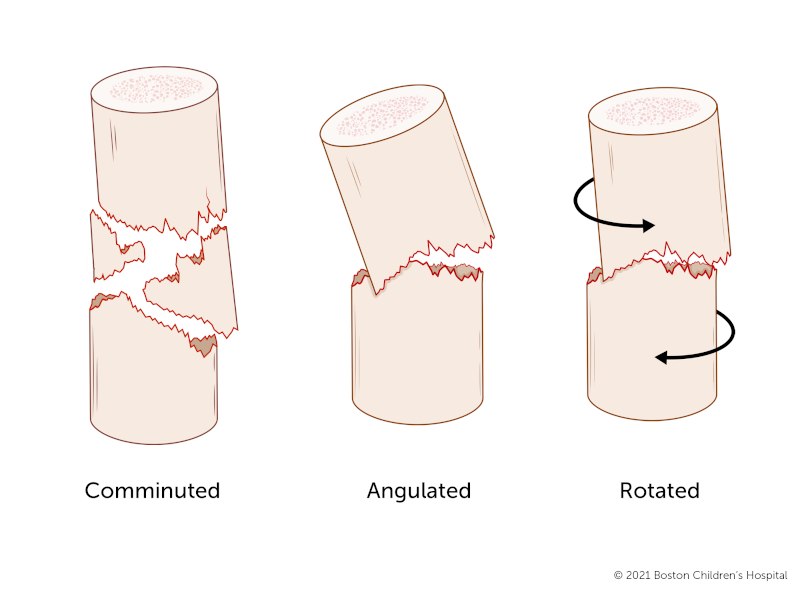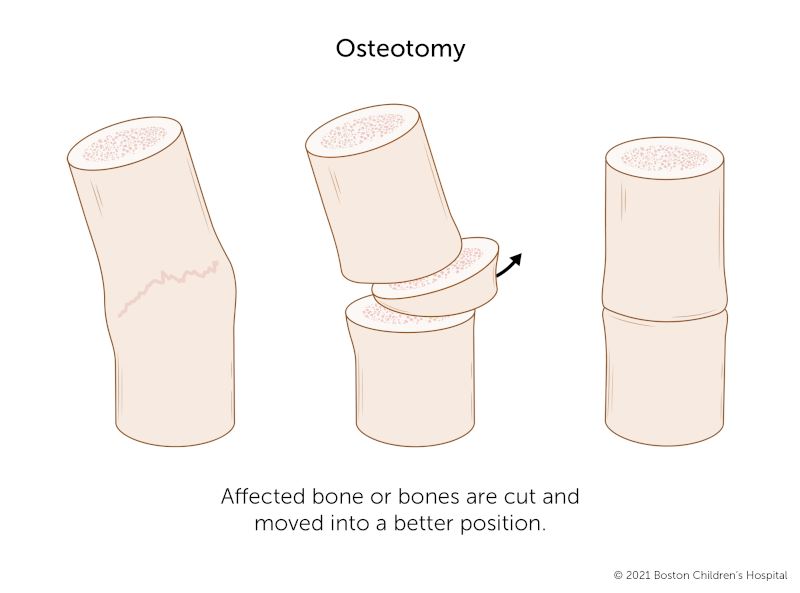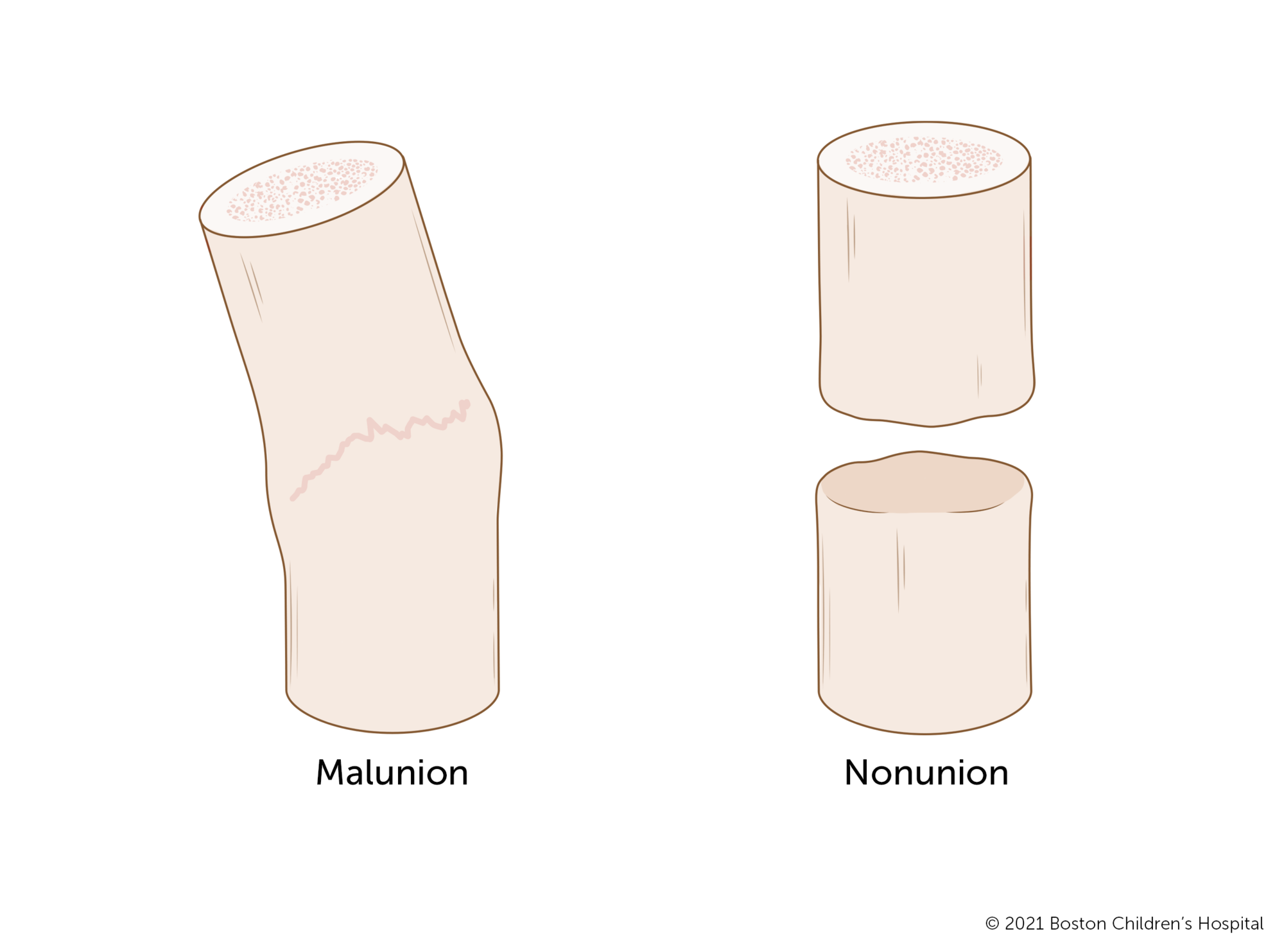Malunion Fracture | Symptoms & Causes
What are the symptoms of a malunion?
The symptoms of a malunion depend on which bone is affected and the severity of the malunion. They may include:
- partial or full loss of limb movement
- partial or full loss of limb function
- limping that persists after a leg fracture has healed
- swelling, pain, and tenderness around the fracture site
- painful joints near the fracture site (for instance, a painful wrist or elbow could be a symptom of a a malunion in the forearm)
- a limb that appears twisted, curved, or short compared to the opposite limb
What causes a malunion?
Malunion fractures are often the result of a complex fracture. For example:
- A comminuted fracture is a type of complex fracture in which the bone has broken into multiple pieces.
- An angulated fracture is a fracture in which the two ends of the bone are at an angle to each other.
- A rotated fracture is one in which the bone rotated when it broke, leaving the two ends of bone out of alignment.

These and other complex fractures are more difficult to treat and pose a higher risk that the bone will heal out of alignment.
Malunions can also occur during the healing process. Possible causes include:
- The fracture does not receive medical treatment right away, and the bone starts healing before the pieces are aligned.
- The bones are set out of alignment.
- The bones become unaligned after being set.
- A bone infection (osteomyelitis) complicates the healing process.
Malunion Fracture | Diagnosis & Treatments
How is a malunion diagnosed?
Your child’s doctor will ask you to describe how the original fracture happened and the treatment your child received. They’ll examine the affected limb and watch your child walking or using their arm (depending on the bone in question). They’ll also compare your child’s affected limb to the other leg or arm to see if there are visible differences in range of motion, function, and length.
An x-ray will help your child’s doctor look for signs of malunion and compare the length of the bones (the affected limb and the unaffected limb). Your child’s doctor may also order a CT scan to see if the bone is rotated. This information will help the doctor plan your child’s treatment.
How is a malunion treated?
If your child’s affected limb is functional, their doctor may recommend treating it without surgery. This may include a shoe lift to compensate for a limb-length discrepancy or a brace to support the limb.
If your child’s malunion is painful, if the limb is impaired, or if the malunion places the limb and surrounding joints at risk, your child’s doctor may recommend surgery to repair the bone.
The most common surgical procedure to repair a malunion is an osteotomy. A surgeon will cut the affected bone or bones and move them into a better position.

To keep the bones stable while they heal, the surgeon may attach a metal plate to the bone or insert a rod down the center of the bone. Another way to stabilize the limb is by attaching a metal frame to the outside of the limb. Your child’s doctor will discuss the options with you before the surgery and together you can decide which is a better option for your child.
If the malunion has caused your child’s limb to stop growing and resulted in a limb-length discrepancy, your child’s doctor may suggest limb-lengthening surgery. This is a complex surgery and only appropriate if the difference between your child’s limbs is significant.
What is the long-term outlook for a malunion?
Your child’s long-term outlook depends on the severity of the malunion and the treatment they receive. If left untreated, a severe malunion can lead to early onset arthritis and loss of function of the affected limb. However, with proper treatment, many children with malunions heal fully and regain much or all of the use of their arm or leg.
How we care for malunions at Boston Children’s Hospital
The Limb-Lengthening and Reconstruction Program at Boston Children’s Hospital provides comprehensive care for children and young adults with malunions and many other limb disorders. Our team includes experts from our Lower Extremity Program and Hand and Orthopedic Upper Extremity Program with deep expertise in both non-surgical care and limb-lengthening and reconstruction procedures.
We have treated thousands of babies, children, and young adults with conditions that range from routine to highly complex limb differences. We also offer the benefits of the extensive services available at Boston Children’s, as well as some of the most advanced clinical and scientific research in the world.
We’ll work with you and your child to review the available options and decide the best course of treatment based on your child’s individual needs.


